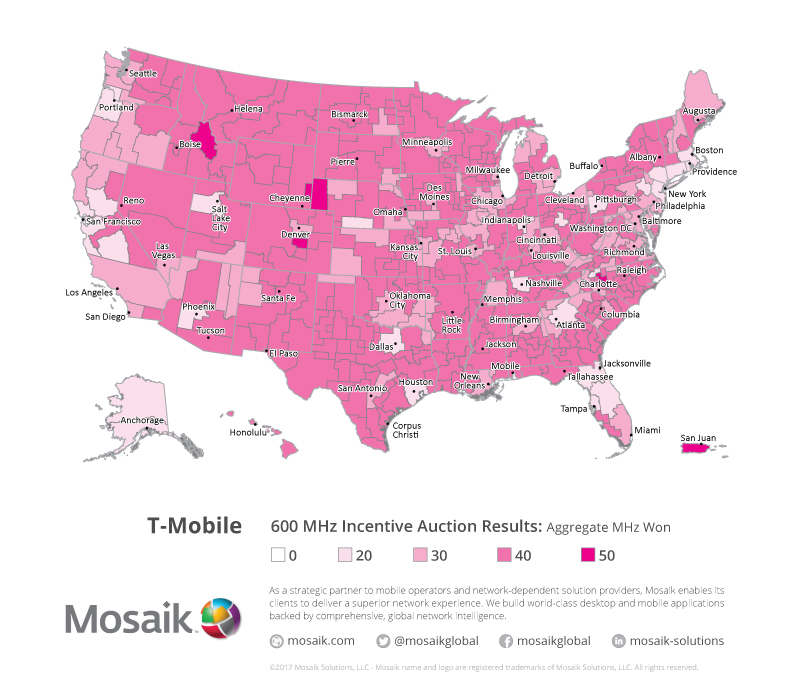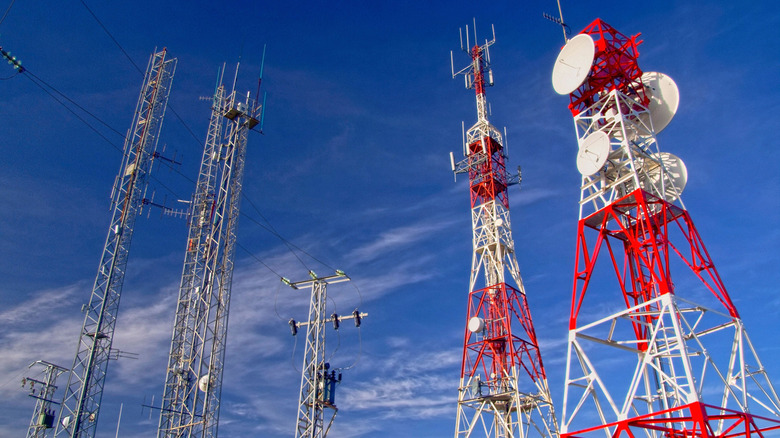Everything You Need To Know About 5G
Yesterday, T-Mobile CEO John Legere published one of his trademarked video announcements. In between some choice words about AT&T, Legere said that T-Mobile is planning on rolling out a nationwide 5G network in the next few years.
Legere tried to make the case that because T-Mobile is the only company that's announced a rollout of 5G on normal low-band wireless spectrum, it's the only one that's going to do "real" 5G. Things are a little more complicated than that, so here's a primer on what 5G is, when you can expect to see it, and which cell companies aren't really being honest.
What is 5G?
The most important thing to understand right now is that the standards for 5G have not been finalized yet. So, there is no "true 5G" and no "fake 5G" — just a bunch of different fast networks. William Webb, the author of The 5G Myth and the CTO at OpenSignal, said that "with 5G specifications unlikely to be finished before 2018 at the earliest, that means anything deployed before around 2020 will be pre-specification and hence not guaranteed to be aligned with 5G."
There's also serious confusion about what spectrum 5G should use. Mobile carriers talk about low, mid and high-band spectrum. Low and mid are what are currently used for mobile networks, while high-band spectrum is more like a Wi-Fi signal. In general, lower-band spectrum can travel further but carry less data, while higher-band spectrum is much more localized, but also can carry much more data.
Legere spent a long time trash-talking Verizon and AT&T's deployment of high-band 5G, claiming that "Fixed 5G" isn't anything to do with mobile. But that's not the case. The whole idea of 5G is to combine all the low, mid, and high-band spectrum at once to make one super-network. Webb says that "5G might comprise low-frequency spectrum (eg 700MHz) for wide-area coverage, mid-band (eg 3.5GHz) for capacity and mmWave for low-latency."
Qualcomm, one of the companies at the forefront of 5G research, echoes this view. "5G is all about breadth and diversity," Matt Branda, Qualcomm's Director of 5G Technical Marketing, told me. "5G is intended to be a unified design, using a mix of bands to deliver a more uniform experience."
Basically, Legere's hatred of millimeter-wave 5G is dumb. The 5G design calls for that high-band millimeter-wave spectrum to be used for high-density local deployments, to solve the problem of network congestion in busy places like train stations or airports. Yes, "true" 5G will rely on the kind of 600MHz network Legere is planning to roll out; but it equally relies on the high-band networks Verizon and AT&T are going to put in place.
So how good will 5G be?
5G is going to be a huge improvement over our current wireless network. If we ignore the mid-band and high-band stuff for now, and just talk about the improvement that T-Mobile's 5G network will see over the current 4G network, estimates suggest that it will be four to eight times better. The improvements won't just be in speed: less congestion and lower latency also comes with 5G, just from improvements in coding and antennas.
Ultimately, the improvements from 5G shouldn't just be faster and better internet — it should also be cheaper. As analyst Joe Madden explains, 5G will lead to a lower cost-per-gigabyte for the wireless companies, which should (in theory!) mean cheaper cell plans, or truly unlimited mobile data.
The lower latency also opens up a world of possibilities. Matt Branda explained that with lower latency, applications like live-streaming VR or instant language translation will be possible, because of the speed devices can talk to servers in the cloud and transmit data.
Another good side-effect should be much more consistent coverage. T-Mobile recently filed a petition with the FCC that revealed what the average data speed is for customers, and it's lower than you might imagine: nearly 25 percent of users don't get a 10Mbps connection, even in urban areas. Branda said that one of the key aims of 5G is to deliver a "more uniform experience" to the user, with the aim being that you'll be able to get a 100Mbps connection anywhere. As noted above, low-band spectrum will be key to achieving that goal in rural areas, while mid-and-high-band spectrum will be needed to get that consistency in urban areas.
 T-Mobile's 600MHz spectrum, which it plans to use to build out 5G
T-Mobile's 600MHz spectrum, which it plans to use to build out 5G
When can I expect to see 5G?
That's the real question, and the one that everyone is arguing about. As Webb said, 5G specs won't be finished until 2018 at the earliest, and after that happens, manufacturers will still need to certify equipment for those new 5G specs. But in the interim, 4G LTE won't stop being improved, and cell carriers are likely to start calling advanced LTE (LTE-A) 5G.
We saw it before with the rollout of 4G: before deploying 4G across its network, T-Mobile deployed HSPA+, an advanced 3G technology that reached the speeds of 4G. T-Mobile called the tech 4G, because it figured the end user was getting the same experience with HSPA as "true" 4G.
AT&T has started doing the same thing this time around. It's deployed advanced 4G technologies and started calling it 5G. It's not a completely ridiculous move: LTE-A technology uses many of the same principles as 5G, so rather than being a sudden switchover, it's going to be more of a slow migration.
Webb thinks that's exactly what is going to happen. He told me "my view is that 5G will start as an add-on to 4G, using the 4G core and signalling channels and just adding a few extra radio channels. Over time it might gradually gain stand-alone capability and then slowly become the primary solution. So there will be a gradual evolution from one to the other, unlike 4G which was a new radio technology in new frequency bands. Indeed, it will be hard to know when we have actually transitioned from 4G to 5G since I suspect they will blend so much into each other."
Qualcomm shares the same view. In a blog post, Qualcomm Executive VP Cristiano R. Amon said that "Gigabit LTE, designed to deliver fiber-optic Internet speeds wirelessly, is giving us the first real glimpse into our 5G future. Gigabit LTE is designed to provide blazing fast speeds over wide geographic areas. That makes it suitable as the high-speed coverage layer that will provide a consistent experience on early 5G networks (in the same manner that mature generation 3G networks helped nascent 4G LTE networks). Gigabit LTE will be the anchor of the 5G mobile experience."
So where do we stand now?
Short answer: in a world of confusion. 5G is coming, for sure, and it's going to be great. But it's not going to suddenly be switch on overnight, and it won't rely on just one set of airwaves. Experts clearly agree that "true" 5G will rely on a mix of low, mid and high-band spectrum to deliver consistent speeds, but that it's going to happen gradually. Improvements in 4G technology, like gigabit LTE, will lay the groundwork for 5G to appear.
Most of all, it's worth remember that there's no fixed 5G standard as of yet. With no standard, it's impossible for one wireless company to claim to deliver "true" 5G. So instead, just remember to listen closely to what the networks are claiming, read the fine print, and remember that faster mobile internet is faster mobile internet — regardless of what number is attached.
